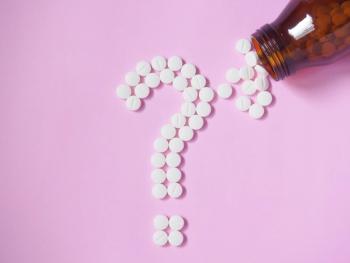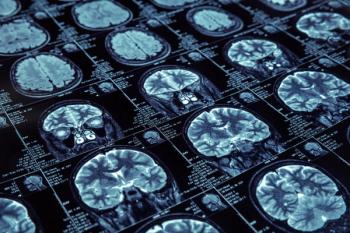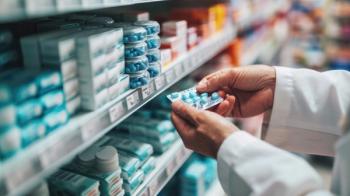
- Volume 0 0
Depression: Identifying Symptoms and Appropriate Treatment
The fourth edition of the Diagnostic and Statistical Manual of Mental Disorders describes a major depressive episode (MDE) as a 2- week period of depressed mood, loss of interest, or loss of pleasure and at least 4 other symptoms of functional change, such as changes in sleeping habits, eating habits, energy levels, concentration, or self-image.1 An MDE rarely is an isolated event; in the 2 years following the first MDE, the recurrence rate is 40%2 (sidebar).
The incidence of depression on the whole is far from rare. Approximately 5.4% to 8.9% of people in the United States?and nearly 121 million people worldwide?are affected by depression.1,3 The incidence in this country in 2006 is projected to be 9.5% (19 million adults).4 Depression is a leading cause of disability in the overall population and is worthy of attention by all health care providers.2
Causes and Risks
Although the true cause of depression has yet to be identified, many researchers believe that its sources lie in changes in the brain and the brain's chemistry. Medications targeting neurotransmitters such as norepinephrine, serotonin, and dopamine have been shown to improve depressive symptoms.5
Risk factors for depression include female gender (20%-25% for women vs 7%-12% for men), family history, unemployment, and chronic disease. Diagnosis, however, should be based on the clinical picture overall and not solely on the presence or absence of risk factors.2,6
Postpartum depression (PPD) occurs in ~10% to 20% of new mothers. The syndrome can occur anytime up to 1 year after childbirth and may be attributed to changes in hormones, situational changes, and life stresses. Early identification can help to manage PPD and prevent it from progressing.7
Depressed patients have a myriad of treatment options available to them. Antidepressant therapies include both pharmacologic and nonpharmacologic interventions.
Medications
Antidepressant medications have been around for decades. Newer medications often are promoted to offer faster improvement, fewer side effects, and safer toxicity profiles than older medications. Despite their differences, all antidepressants share the same ultimate goal: altering brain neurotransmitter levels to relieve the symptoms of depression (Table).
Tricyclic antidepressants (TCAs), among the first antidepressants available, work to inhibit the reuptake of norepinephrine alone or the reuptake of both serotonin and norepinephrine.8 These medications have a narrow therapeutic efficacy and have been associated with cardiac toxicity. Doses 3 to 5 times greater than therapeutic doses have caused toxic levels, leading to prolongation of the QT interval and eventual arrhythmias. Side effects include anticholinergic and orthostatic effects, along with sedation, weight gain, and sexual dysfunction. Additionally, many TCAs exhibit interactions with other medications. As a result, they are used less frequently now as antidepressant therapy.2
Another older and less often prescribed class is the monoamine oxidase inhibitors (MAOIs). They irreversibly block monoamine oxidase, resulting in increased levels of serotonin, norepinephrine, and dopamine. The blockade of MAO in the gastrointestinal tract, however, results in an inability to metabolize tyramine, which causes a hypertensive crisis after consumption of foods containing tyramine. Because of their multiple drug interactions, severe dietary restraints, and side effects, MAOIs no longer are first-line therapy.
The selective serotonin reuptake inhibitors (SSRIs) exert their effect by blocking the presynaptic serotonin reuptake pump to increase serotonin activity. SSRIs have gained prescribing popularity due to their safer toxicity profile and fewer side effects than the TCAs or MAOIs. Clinicians should be aware of the potential for serotonin syndrome, a potentially life-threatening episode that occurs when brain serotonin levels are too high. Administering 2 or more serotonergic medications together may increase the risk. Signs and symptoms of serotonin syndrome include hyperthermia, sweating, tachycardia, agitation, and neuromuscular changes.2
Additional antidepressants include venlafaxine, bupropion, duloxetine, mirtazapine, and nefazodone. Like the SSRIs, these newer agents tend to be less toxic and better tolerated than the older agents.2,8
In some patients, a single antidepressant agent may not fully relieve symptoms. Although the addition of a second antidepressant may be helpful, augmentation with nontraditional antidepressant medications also may improve response rates. Augmentation therapies may include agents such as atypical antipsychotics, lamotrigine, or thyroid hormones.8
Nonpharmacologic Interventions
Electroconvulsive therapy (ECT) offers treatment for patients with severe major depressive disorder with psychotic features, psychomotor retardation, or medication resistance. Improvement usually occurs after 6 to 12 treatments, given as 2 to 3 treatments per week. Although ECT remission rates are ~60% to 80% in patients with severe major depression, relapse rates are >50%. Initiating antidepressant medication immediately after ECT can help prevent relapses.8
Psychotherapy can improve symptoms in patients with mild-to-moderate depression. Examples of psychotherapy include cognitive behavioral therapy, interpersonal therapy, and problem-solving therapies.8
Patient Education
Social stigmas may hinder patients' acceptance of a diagnosis of depression and their compliance with treatment. The pharmacist, however, can maximize therapy though patient education.
- Emphasize that depression is an illness associated with changes in the brain's chemistry
- Educate patients that depression is a common condition and often is associated with physical manifestations, such as headache, fatigue, and pain
- Discuss treatment options with patients, including both pharmacologic and nonpharmacologic interventions
- Encourage patience with antidepressant medications. Symptoms usually improve anywhere from 2 to 8 weeks from beginning therapy.
- Counsel patients to take medications as directed, even if their symptoms are gone. They always should consult their health care provider before discontinuing therapy.
- Provide positive reinforcement throughout the therapy
Summary
Depression is a widespread ailment that affects all types of people. The availability of various treatment options offers an appropriate remedy for each individual. With suitable treatment, the depressed patient can achieve the goal of resuming his or her previous level of functioning and quality of life.
Dr. Holmberg is a pharmacist with Phoenix Children's Hospital, Phoenix, Ariz.
For a list of references, send a stamped, self-addressed envelope to: References Department, Attn. A. Stahl, Pharmacy Times, 241 Forsgate Drive, Jamesburg, NJ 08831; or send an e-mail request to: astahl@ascendmedia.com.
Articles in this issue
over 19 years ago
A Good Night's Rest—Helping the Patient with Insomniaover 19 years ago
Is Sleep-Driving for Real?over 19 years ago
Painful Diabetic Neuropathy: Alternative Treatmentsover 19 years ago
A New Day Dawns for NCPA and NACDSover 19 years ago
compounding HOTLINEover 19 years ago
RESPy AWARDover 19 years ago
ULM STUDENT NEEDED TO HELPover 19 years ago
Must an Embezzling Pharmacist Repay Wages Received?over 19 years ago
Web-based Program Aids Health Care Industryover 19 years ago
USF Aims to Change Health Care DeliveryNewsletter
Stay informed on drug updates, treatment guidelines, and pharmacy practice trends—subscribe to Pharmacy Times for weekly clinical insights.

















































































































































































































